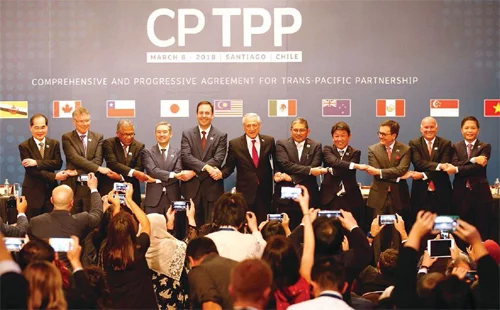ONCE again, global trade is witnessing the protectionism’s moment in the sun as the political tide in advanced economies seems to move towards greater protectionism.
Malaysia, in contrast, has continued to adopt an open trade and investment regime. The signing of the Comprehensive and Progressive Trans-Pacific Partnership (CPTPP) last month has marked its commitment to a rules-based open trading system and to dismantle protectionist sentiments.
However, the recently released Bank Negara Malaysia Annual Report suggested that protectionist measures by major trading partners would still pose risks to Malaysia’s exports.
Are there effective ways of communicating the costs of protectionism and benefits of free trade to the general public?
Although there is no consensus as to what defines “protectionism”, the discrimination of foreign operators and trade-restrictiveness are considered to be the core elements. Studies have shown that protectionism generates costs to consumers that far exceed the benefits gained by producers. And, issues such as rising inequality, unemployment and economic dislocation, which are often associated with trade, are in fact largely due to technological and structural changes.
Yet, there are two major reasons why protectionism has been given much attention and credibility. One, the costs of trade liberalisation are only concentrated among a few import-competing producers. But, the gains from liberalising trade commonly go unnoticed because they are shared broadly by the consumers. Hence, it creates incentives for special interest groups to lobby policymakers.
Two, protectionist measures are often enacted due to a desire to level the playing field between local and foreign firms. But, the problem is that both developed and developing countries use this argument simultaneously.
On the one hand, developing countries enact protectionist measures based on the argument that local firms cannot compete with high-productivity foreign firms. On the other, developed countries see the need for protectionism because their firms cannot compete with firms in low-wage countries.
Nevertheless, British political economist, David Ricardo, has shown that countries can engage in trade based on comparative advantages, i.e. specialising in what they are good at, and not based on absolute advantages, as illustrated in the above arguments.
However, taking into account the impact of trade on labour, the Hecksher-Ohlin-Stolper-Samuelson theorem predicts that free trade would hurt low-skilled workers in advanced economies. This
prediction has indeed begun to materialise, generating renewed negative perception of trade liberalisation. It is therefore imperative that policymakers and the global community develop effective responses to rising protectionist sentiments and the backlash against globalisation.
First, to make a compelling case against protectionism, a more systematic assessment of the trade impact of recent protectionism is required. In the world of global value chains, imports are as important as exports. And, export performances of domestic firms depend heavily on access to competitively-priced imported inputs. Protectionism will only drive up the production costs of domestic firms, which will also affect jobs and competitiveness.
More complex trade issues such as non-tariff measures (NTM) should also be fully understood. This calls for proper identification of NTMs, their objectives and their trade-restricting effects. A more stringent approach, like challenging NTMs via dispute settlement, may also be explored.
Second, the bottom-up approach to globalisation is needed. Policymakers should acknowledge the uneven and potentially divisive impacts of globalisation, particularly at the grassroots level. The rise of protectionism may have an economic rationale where people want some form of “freedom of choice” in choosing what jobs they want to do.
In defence of efficiency, globalisation enables advanced economies to export labour-intensive jobs to developing economies. But, what is often overlooked are conversations on people’s aspirations and how these aspirations might match up with available job options.
Therefore, outward-looking community-level strategies, or progressive localism, should be promoted. Non-governmental organisations and community groups should foster social resilience in the community to overcome the uneven effects of globalisation. Measures to reintegrate displaced workers back into the labour market should also be implemented.
Third, trade has historically been a huge deterrent to violent conflicts. This argument should be used as a ringing defence of free trade. The term “trade war” seems almost an oxymoron, considering that trade gives nations economic incentives to avoid wars, since trade creates international goodwill and interdependency between individuals and businesses.
Research by Patrick J. McDonald from the Department of Government, University of Texas, Austin, found that a country in the bottom 10 per cent for protectionism is 70 per cent less likely to engage in a new conflict than a country in the top 10 per cent for protectionism.
The use of military jargon to label what are rather peaceful economic transactions should be discouraged. The use of “invasion” to describe imports is a case in point.
Finally, trading nations prosper by facilitating economic exchange, not by complicating this process.
More rounds of US-China tariff battle would only disturb the existing supply chains, affecting producers and consumers worldwide. Thus, stronger public support for free and open trade is needed more than ever now — lest the fighting elephants would stomp on our grass.





